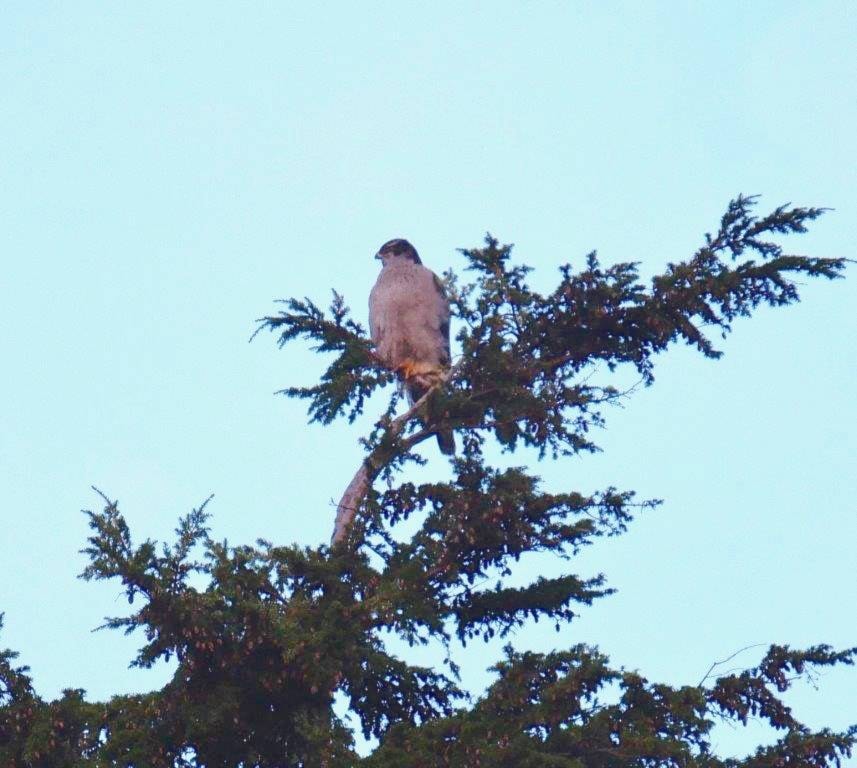By Margo Hearne
It’s a bright morning with a low mist over the water. After all the wild weather over the past while, it’s nice to see the sun for an hour or so. We are deep into winter.
Dark-eyed Juncos are busy at the feeder and there are a few added attractions, including Varied Thrushes, those robin-sized orange and black birds. They are beautiful and don’t come to the feeder unless it’s going to get chilly. When we see them, we know we’re in for a few frosty days. A few Pine Siskins have appeared, only one or two, stragglers left behind from the big flocks that went through in late November and early December. They are small, pale, striped birds with a little yellow on the wing.
The Chestnut-backed Chickadees seem to feed around the clock — small birds that have to stay warm. They stock up all day so they can last through the cold nights. Chickadees, like many small birds that don’t migrate south, have a dense layer of feathers that they fluff up for insulation during cold winter nights. They sleep with their face and feet tucked into their soft, downy feathers.
If it’s really cold they can lose a third of their body weight overnight so they have to eat almost constantly to keep up their fat reserves. According to that wonderful nature diary, A Bulkley Valley Year, published last year by the Bulkley Valley Naturalists in Smithers, “We can keep these wonderful birds snug and warm by providing high energy bird feed such as black oil sunflower seeds, suet or lamb fat, and by providing roost shelters for them.”
The diary is available now and into its second printing. If you’d like a copy let us know. It’s a perpetual diary, lasts for years, has original art from local artists, and is a positive mine of information.
My “office” is in complete chaos. I had to unplug everything so I could suck out all the cobwebs and dust that were slowing down the fans inside the computer box with a vacuum cleaner. Not a high-tech solution but it works. Putting everything back together again hasn’t quite happened and I was wondering where to begin when a large raptor flew across the sky and landed in the adjacent trees.
It was a big bird, partly hidden by foliage, and, because it looked stocky on landing, it appeared a little like a buteo. However, buteos are wide-winged birds with short tails (a local example is the Red-tailed Hawk) and this one had a long tail in flight so it was more likely to be an accipiter (such as the Sharp-shinned Hawk). But it was too big for a Sharp-shinned and didn’t seem to have a distinctive face pattern, so it could have been a Cooper’s. The light wasn’t good, the sun hadn’t reached over the hill yet, so we waited.
As the light strengthened, face-markings appeared: a pale white line over the eye, a black patch behind the eye. There it was — an adult Northern Goshawk, Stads K’un, the bird of the islands. Nice. It sat in the high tree for at least a half-hour before vanishing to the northeast. Who cares about a tidy office? Speaking of hawks, there’s a Northern Harrier coursing over Delkatla again. It, too, is a big hawk, with a white rump that shows up against its tawny body.
